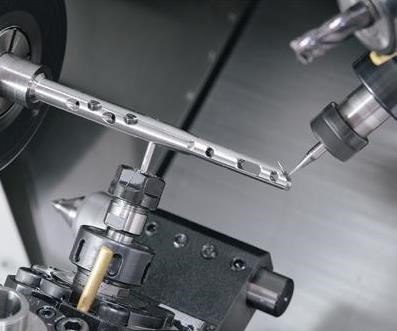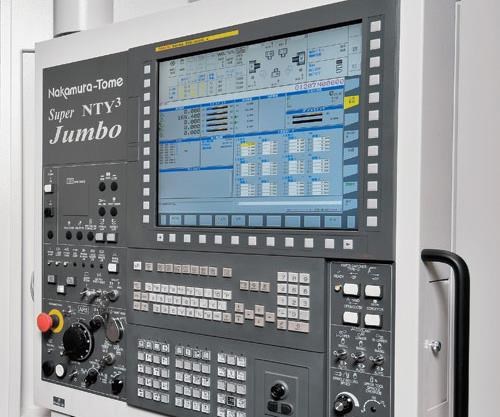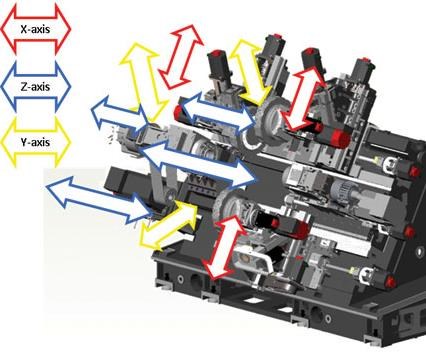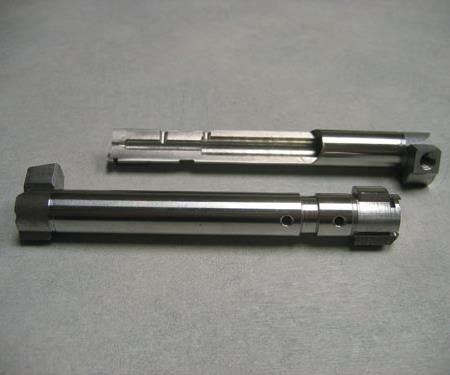Multitasking Technology for Turn/Mill Lathes Evolves
From a few live tools on a turing center turret, turn-mill has developed into true multitasking machining.
Simultaneous machining is key to multitasking.
Whether 20 to 30 years ago or today, successful milling and turning operations demand a close examination of processes that yield optimal productivity, profitability and part quality. While these factors were just as important in the past, today the tools, technology and global competitive environment are very different.
Historically, every shop had about the same level of technology—generally a lathe, vertical mill and grinder. To stay ahead of the competition, job shop owners, machinists and manufacturing engineers needed to be more creative with the equipment than the next shop. Today, it is the advancements in technology, such as applying multitasking machines, that helps keep shops ahead of the competition.
Multitasking Advances
Initially, machine tool builders started making CNC lathes with backworking spindles. This capability allowed the back side of a part to be completed on one machine instead of two. Then, some builders began making true opposing twin spindles with two turrets and milling capability. Often the turrets had 12 stations with six stations that could mill or drill at about 2 or 3 hp.
These platforms allowed manufacturers to reduce cycle time by as much as 50 percent, providing more quality with less handling of the workpiece. Complete parts could be produced in one machine. This twin spindle and dual turret configuration became popular because it enabled manufacturers to increase production and reduce cost.
In only a few short years, builders were adding a Y axis to this platform. The Y axis significantly increased productivity by allowing shops to work on one machine to produce more complex parts with features that were not on centerline.
The next significant driver for multitasking development and acceptance occurred because U.S. manufacturing became part of the global economy as it started to see a lot of work going to other countries. In some cases, the cost of raw material in the U.S. is more than another country’s finished product. This left the U.S. with relatively low-volume, high-quality products to be produced domestically.
Twin-spindle, twin-turret multitasking machines are efficient technology for some of these applications. However, short run jobs often cannot keep costs low enough to be profitable because of the long setup time involved.
Turn-mill machine tool builders rose to the challenge by delivering a twin spindle with a B-axis tool spindle, replacing the 12-station turret. Essentially, this is a turning machine with a rotating tool spindle such as one on a machining center. The tool spindle offers 10, 15 and 20 hp, the ability to change tools in the same manner as on a vertical mill and Y-axis capability.
This technology also added the tool magazine to the machine, allowing for 40, 60, 80 and 100 or more tools. This design of multitasking allows for a reduction in setup time because the tools stay resident in the tool magazine and do not need to be removed. Complex parts can be machined complete, including intricate angle features, because a B-axis tool spindle can change to any angle as easily as a new program position.
Although this technology reduced setup time, with only one B-axis tool spindle the multitasking advantage of maximizing with two tools in the cut was lost and cycle times were increasing.
Bringing Turrets Back
To address the cycle time increase and allow multitasking, a lower turret was introduced. Some builders offer two lower turrets and machines with lower turrets that offer milling and a Y axis.
The lower turret technology made it possible to reduce cycle and setup times when manufacturing small lots of complex parts. Many complex defense components and intricate medical products are now manufactured effectively with this multitasking technology.
Today, some of the manufacturing is coming back to the U.S. Many U.S. manufacturers are opting to use American labor because they have had quality issues when outsourcing to other countries. Also, the cost of shipping goods has been steadily rising.
However, U.S. manufacturers need to reduce costs even more to increase productivity and keep work in the country. Advancements in multitasking lathe technology can offer significant benefits. Machine tool builders now offer turning systems with a twin spindle (20 to 30 hp) and three turrets that have Y-axis capability. The three turrets can provide 36 to 72 tool stations capable of 10-hp milling with 40-Nm torque on all stations.
An Example
This current technology allows production of a family of parts with complex features. Three tools simultaneously in the cut can produce dramatic cycle time reductions. And since the barstock becomes the fixture, no additional fixtures are necessary to produce complex shapes with tight geometric tolerances. An example of this is a gun manufacturer who was producing a gun bolt for its lever action rifle.
The volume was 40,000 parts per year and there were three different calibers. It had nine operations to complete the part. All the operations were a single part flow, and change-over to other sizes was time consuming.
The company was losing sales because it could not produce parts fast enough. The shop transferred the process to a twin spindle, three-turret, two Y-axis multitasking lathe, with a three-turret configuration that provided the correct number of tools required (31). As a result, the part was machined complete, from barstock in a single machine with no change-overs, in 7 minutes. One machine provided a full production solution.
Multitasking Capability Lowers Costs
Both short and long production runs can be made efficiently because no setup time is required. The three turrets with multiple tools means no tool changes are needed—the operators can change the bar size or workholding, call up a new program and start making the part.
Big improvements have been made in the manufacturing of the milling heads used on these machines. The manufacturers are using better quality bearings, and some are even using four bearings instead of three. Some are using Timken roller bearings for better rigidity, which offer high pressure coolant-through capability and quick-change systems as well.
There are many advantages to multitasking, including decreasing process time or cycle time to produce a complete part. Even with complex parts, a mill-turn lathe has many advantages. With all the different machine configurations—two turrets, three turrets, three turrets with a Y axis or a B-axis tool changing machine—the ability to match a configuration to an application has never been easier.
It’s for Production, Too
When is it time to consider a mill-turn process? The simple answer is when a shop is faced with producing any part with turning, drilling or boring, OD or ID threads and a few mill features, such as a square or hex, even a bolt-hole pattern. There is arguably no better way to produce those types of parts than on a multitasking machine.
To maximize profits even further, manufacturers can reach “lights out,” untended operation, making manufacturing costs even lower and profit higher using simple automation such as magazine bar feeders, multi-pallet machines and robotics. Untended running is much more feasible today. The machine tool manufacturers are supplying software features such as tool load monitoring and tool life management to make “lights out” or untended running highly successful.
Related Content
A Mill-Turn’s Value for Machining Micro Gears
This leading manufacturer of non-lubricated robotic gears uses a seven-axis turn-mill to machine components from “amorphous” metals such as bulk metallic glasses.
Read More5-Axis Machining Centers Transform Medical Swiss Shop
Traditionally a Swiss machine shop, Swiss Precision Machining Inc. discovers a five-axis machining center that has led the company to substantial growth. (Includes video.)
Read MoreChoosing the Right Machine for Turned and Milled Medical Parts
The medical market is known for exceptionally tight tolerances and difficult materials, which means that selecting the proper machine is necessary to ensure a job is profitable.
Read MoreNomura DS Showcases Turning and Milling Machines Engineered with Excellence
Gosiger offers the comprehensive line of Nomura DS machine tools at competitive prices.
Read MoreRead Next
Boost Throughput With Multitasking
As a shop’s typical workload moves beyond high-production turned parts, new ways to reduce leadtimes and improve machining accuracy are evolving.
Read MoreDo You Have Single Points of Failure?
Plans need to be in place before a catastrophic event occurs.
Read More











.jpg;maxWidth=300;quality=90)











